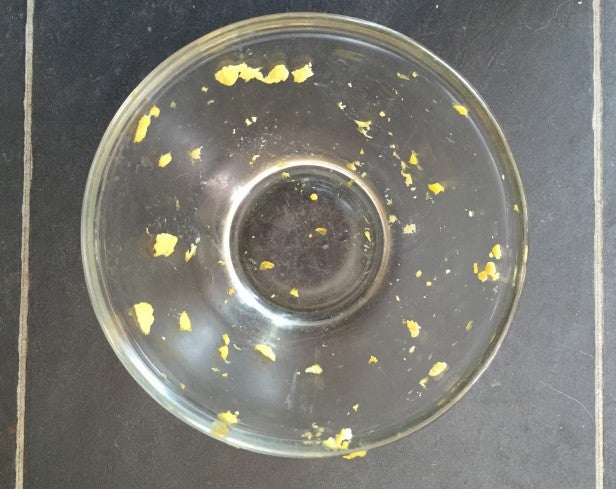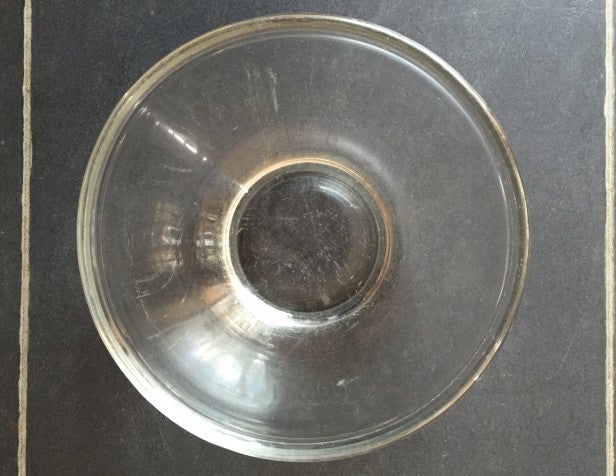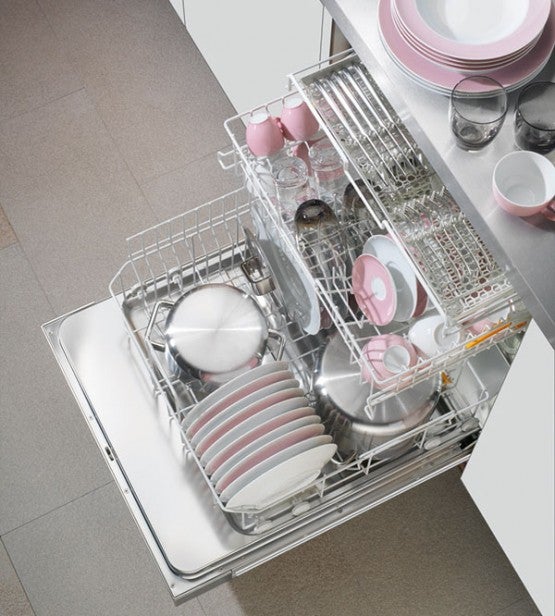Miele G4920SC Review - Performance and Verdict Review
Performance and Verdict
Simple on the outside and clever on the inside proves a sparkling combination

Sections
- Page 1 Miele G4920SC Review
- Page 2 Performance and Verdict Review
Miele G4920SC – How well does it wash?
Following another
pre-dishwasher test breakfast of scrambled egg, Weetabix and red wine,
we loaded the Miele with a selection of dirty kitchen crockery, pots,
pans and utensils to best replicate a real-world load. In went our trio
of test items that include dried on Weetabix in a ceramic bowl, a greasy
wine glass and the Pyrex bowl used to cook the scrambled egg in a
microwave. The first test run the Miele’s Sensor wash programme and a
second ran the Eco mode, using a leading brand triple action dishwasher
tablet throughout.
We had to run the main sensor wash twice as we
didn’t believe our own results the first time. All three test items
were spotless – including the ‘impossible’ scrambled egg bowl – and
the Miele had used barely 12 litres of water and 1kWh of juice in just
over 2 hours. Run number two proved the Miele is also consistent as we
got almost exactly the same result.

The scrambled egg bowl before (above) and after (below)
The glass and breakfast bowl
were clean, dry and polished to perfect cupboard dry with no signs of
smears of streaks. Yet it was the scrambled egg test that had us truly
impressed. The Miele turned in a near perfectly clean bowl in a test we
had designed to not be possible for an automatic dishwasher to clean
completely.
Whether our resident farm chickens were laying eggs
with less sticky proteins this week we couldn’t tell, but the Miele’s
results speak for themselves. That is the cleanest egg test bowl of any
machine we have tested so far.
Perhaps predictably the ECO
programme was a less efficient at cleaning, although the egg test
results were still up there with some of the best models. The glass and
breakfast bowl were excellent and there was no drips or pools of water
left inside the machine at all.
However, the ECO mode took
nearly four hours to compete and used only fractionally less water and
energy then the sensor programme.
SEE ALSO: Best Washing Machines
Miele G4920SC – How much will it cost to run?
The
G4920SC is an incredibly efficient machine in its standard sensor
programme and one of the most economical dishwashers we have tested to
date. It is probably only its slightly higher water use that stop it
being rated as an A machine overall. Stick to the sensor programme
and it certainly won’t be far off.
The sensor programme with the
dirty load used 1.09kWh of electricity and 12.2 litres of water while
the ECO mode registered 0.93 kWh hours and 9.9 litres of water. Key
difference in actual usability between the two is the time difference of
nearly an hour and half in the sensor mode’s favour. It takes a long
time to be ECO, apparently.
Based on running 250 dishwashing
cycles per year, half in sensor programme for heavily soiled loads and
half in ECO for lighter duties, the G4920SC would cost you less than £40
a year in electricity to run.
That is even more efficient than
Miele’s flagship A machine and the lowest electric consumption of any
dishwasher we have tested to date. For those on metered water the low
water use would only add around £5 for direct water usage.
Should I buy the Miele G4920SC?
Definitely.
It washes better than any machine we’ve tested and uses less energy
doing it, which is hugely impressive. It still has a premium asking
price, but if you’re a Miele fan then it’s a superb option if you can’t
stretch to the quieter, flagship model.
The one wrinkle is it’s
noisier than most machines in this class. Both the Samsung DW609970FS
and Whirlpool 6th Sense PowerDry ADP900IX are noticeably quieter and
clean almost as well, and the Miele is arguably the least attractive of
the three. Any of three will serve you well, though, so it comes down to
what you care about most when choosing. Head to our Best Dishwashers round-up for even more options.
Verdict
An outstanding dishwasher that’s easy to use, efficient and cleans brilliantly.



